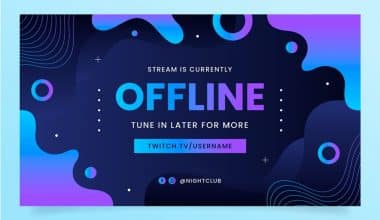A marketing program is the umbrella term for the range of actions taken by a business to boost sales. Every company must take this important step to make sure that their marketing initiatives are successful and meet their desired marketing goals. In this post, we’ll examine an online and affiliate marketing program’s essential components, the value they provide for your company, and how to create one on your own.
Marketing Program
A company’s marketing program outlines the many marketing initiatives it will use to boost sales. A marketing program is a well-planned series of activities that are coordinated to accomplish marketing goals.
The Value of a Successful Marketing Program
Creating a strong marketing strategy has several advantages for your company. Let’s examine five causes.
#1. Establish a Firm Business Policy
Setting corporate goals and identifying the precise actions needed to attain them are made simpler by creating a strong marketing strategy. Also, employees can use this as a guide to help them understand what is expected of them at work and how to enhance workflow. A marketing plan also aids in providing answers to several significant inquiries about the effectiveness of your marketing efforts, such as:
- What marketing channel is most effective for your product?
- Which of your target markets has the greatest chance of buying your goods?
- How much money will you need to spend on product promotion?
- How do you make yourself stand out from the crowd?
These inquiries can aid businesses in their short- and long-term planning for their marketing initiatives. In light of this, every aspect of the business can methodically cooperate to get the highest performance.
#2. Differentiate Yourself From the Competition
In 2020, there were about 4.35 million new company applications lodged, according to the US Census Bureau. Given the fierce competition, businesses must be distinctive to stand out above other brands and draw in more customers. In order to improve your plan, you may be able to uncover the advantages and disadvantages of your rivals by studying their marketing tactics while you design your marketing program.
#3. Clarify Your Product
The most common difficulty for business founders is establishing their product or service. This covers elements including pricing, sales channels, product segmentation, and niche. With a strong marketing strategy and a clearly defined product, you can potentially discover other opportunities in your market sector. You can sustain your company’s performance and promote long-term growth by doing this.
#4. Improve Your Customer Target Knowledge
Many prosperous businesses base their operations on the satisfaction and experience of their clients. Additionally, to produce products or services that suit the preferences of audiences, it is important to understand their needs and characteristics. A marketing program is a fantastic instrument for this.
Marketers must closely monitor the client journey and guarantee that every interaction is positive. A marketing program is essential for strengthening your promotional approach and better understanding the problems that clients face.
#5. Distribute Resources More Wisely
For all company activities to function properly, resources are needed. These include your money, human resources, and the tools you have at your disposal to help you accomplish your goals. However, without a clear and well-thought-out plan, it can be challenging to assign them strategically. A thorough plan outlining how many resources will be used for each activity and procedure should be part of your marketing program.
Develop Your Marketing Program in 5 Easy Steps
Now that you understand its importance, it’s time to develop a marketing strategy for your company. In this section of the article, we’ll look at five critical phases for creating a successful marketing strategy.
#1. Establish Your Company’s Goals and Resources That Are Available
Understanding and conveying your business objectives to every member of the marketing staff is the first step in creating a marketing program. This enables everyone to have the same perspective on the direction and goals of the firm. Following that, you can begin generating concepts for tactics that might work for your company given the resources at hand. It’s critical to respect resource constraints; otherwise, your marketing strategy may become unrealistic and more difficult to implement.
#2. Create a Perfect Buyer Persona
A buyer persona is a thorough profile of your ideal client. This summary should be built on thorough research about your target market, the state of the market, and your rivals. Since it is challenging to develop a persona for every single customer, strive to develop one that reflects the entire group. With a buyer persona, you should put the needs of the consumer ahead of your own.
#3. Investigate Your Rivals
Examining your rivals is one of the finest methods to judge how effective a plan is. Take advice from their experience to guide your decision on a marketing strategy that will benefit your business. You may define the distinctive value proposition of your product and find market gaps via competitor research. This research can also be used to provide a standard for tracking the expansion of your business.
#4. Establish Metric-based Marketing Objectives
Marketing metrics are numerical evaluations of your marketing effectiveness. Metric-based objectives are often simpler to comprehend since they are more precise, concrete, and measurable. For instance, it is preferable to choose “Get at least 10% of total content to show up on the first page of search results” rather than “Create SEO articles with better quality.” Additionally, you can analyze performance more effectively by using metric-based targets.
#5. Schedule Your Marketing Initiatives
It’s time to make your action plan once you’ve decided on your strategies and the resources you have at your disposal. This strategy often contains a timeframe and more specific step-by-step tasks for each member of the marketing team. To make progress tracking simpler, think about letting each division or person write their own plan and combining them all into one document.
Affiliate Marketing Program
Affiliate marketing programs, also known as associate programs, provide a third-party platform that enables people and businesses to connect and collaborate.
In order for affiliate marketing programs to function, users must first register an account on the platform and select the brand they wish to promote.
Affiliates can share a special link created by the program with their website visitors, clients, and followers on social media. When a user clicks the link and buys, the affiliate gets a commission. Affiliate marketing boosts revenue. The development platforms for the programs feature tracking tools to keep an eye on the affiliates.
The Top Affiliate Programs
Below are four top tier affiliate marketing programs, as detailed below:
#1. Amazon Associates
Since 1996, one of the best affiliate programs for newbies has been Amazon Associates. In actuality, it was the world’s first program for affiliate marketing on the internet.
Since its creation, it has aided internet advertisers in generating revenue by displaying advertisements to the millions of people who use Amazon each year. An Amazon affiliate is compensated with referral fees when they promote a link that results in a purchase.
- Commission percentage: varies according to the type of product, from 1% to 20%.
- Payment cycle: 60 days from the conclusion of the current month. Additionally, Amazon withholds payment from Amazon Associates until they reach a $10 threshold.
- Payment options include a check, a direct deposit, or an Amazon gift card.
#2. eBay Partner Network
The place where you can register to become an eBay affiliate is the eBay Partner Network. The range of commissions is 50% to 70%. eBay provides affiliates with the resources they need to efficiently market eBay’s products. Regardless of how you decide to sell your products, you can benefit from eBay’s affiliate program. As an eBay affiliate, in contrast to some of the additional affiliate marketing schemes on our list, you’ll be dealing directly with eBay and its goods. While you will, to some extent, assist sellers, your main interaction will be with eBay. It’s undoubtedly among the simpler application processes.
- Commission percentage: Depending on the kind of goods, it ranges between 50% and 70%.
- Payment cycle: Accounts that have made more than 10 units of a country’s currency (such as $10 US, £10, etc.) get paid around the 10th day of the month.
- Payout options include PayPal and direct deposit (if available in the affiliate’s country).
#3. Commission Junction (CJ)
CJ has been assisting affiliates and merchants ever since it was founded 20 years ago. The business collaborates with twice as many Internet Retailer 500 businesses as any other affiliate program, according to its website. CJ also bragged about how much more merchants like their website than other affiliate marketing schemes. That assertion appears to hold up fairly well when you look at what it has to offer in more detail.
#4. Impact
Impact is one of the few affiliate marketing programs that connects individuals with top brands like Airbnb, Uber, Adidas, and more. It has a reputation for having automation solutions that can aid in campaign organization and revenue growth. The brands, which cover a range of industries including beauty, travel, retail, fitness, and others, are free to join and manage partnerships with. After joining Impact, you get access to a marketplace where you may browse leading companies and get in touch with their affiliate managers. According to the brand, the commission rate varies.
- Payment cycle: You get to pick the day each month when you wish to take your affiliate commissions.
- Payout options include direct transfer, PayPal, and BACS.
Marketing Program Online
You can learn the abilities, frameworks, and tactics necessary to involve consumers in your pitch, your company, or your product on the internet by taking online marketing programs. However, there are a lot of online training options accessible, making it challenging to sort through programs and decide which ones are worth your time and money. Here are 4 online marketing program tools to help you make a decision:
#1. ClickMinded
The platform only focuses on training people in online marketing programs. The Digital Marketing Course aims to enhance revenue with seven classes. Each course covers social media, email, content, paid advertising, sales funnels, web analytics, and SEO.
#2. Alison
With 20 million users, 3.5 million graduates, and 3,000 courses, Alison is a well-known online marketing program learning platform. In this course, you learn about the numerous facets of an e-business, along with advice and resources for putting an effective e-business strategy into practice. To make sure that the good or service they are offering reaches its intended market, trainees learn how to design, develop, edit, and track a website.
#3. Udemy
The online marketing program on Udemy is an extensive collection of 12 courses. This course does an excellent job of segmenting the program into platform-specific modules when compared to the others in the guide. Facebook advertisements, Instagram, LinkedIn, Pinterest, apps, Quora, Twitter, and Youtube marketing are all covered in different mini-courses. Additionally, you learn how to create a website and use Google Ads. Each mini-course is divided into brief lectures that last no more than five minutes, making the subject matter understandable and available.
#4. Udacity
Udacity offers a comprehensive series of modules for its Nanodegree in Digital Marketing, which covers a wide range of topics like marketing principles, strategy for content, social media marketing, SEO, search engine optimization with Google Ads, display advertisements, email marketing, and Google Analytics. It’s a fantastic all-around course that is beneficial for experienced digital marketers as well as beginners. This course stands out from the competition thanks to its emphasis on practical, hands-on projects from business professionals.
What Are the Five Marketing Programs?
The five marketing pillars—Product, Price, Promotion, Place, and People—serve as a framework to direct marketing initiatives and maintain marketers’ attention on important issues. Let’s examine their significance for your brand in more detail.
How to Write a Marketing Program?
To establish a successful marketing strategy, adhere to the steps listed below.
- Executive summaries are a good place to start.
- Describe the mission, vision, and values of your business.
- Determine the market and the rivalries.
- Identify your target market.
- Describe your marketing objectives.
- Outline your marketing plan.
- Establish a marketing budget.
Are Marketing Degrees Worth It?
With a marketing degree, you may work in almost any field, for any size company. Anywhere you travel, your abilities could be valued and in demand. Through 2029, it is anticipated that the majority of marketing-related professions will experience faster-than-average growth.
How Long Is a Marketing Program?
Most of these programs have 120 credits and take four years to complete full-time or up to six years to complete part-time. Programs that are accelerated can occasionally be finished in as little as three years.
Related Articles
- Free Affiliate Programs: 2023 Best Easy Guide
- How to Make Money on eBay: 2023 Profitable eBay Selling Tips
- Affiliate Marketing for Beginners (20+ Companies to start with) +free courses






